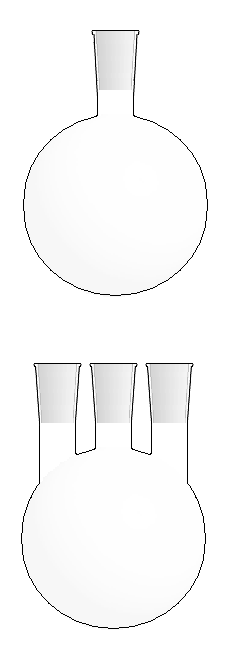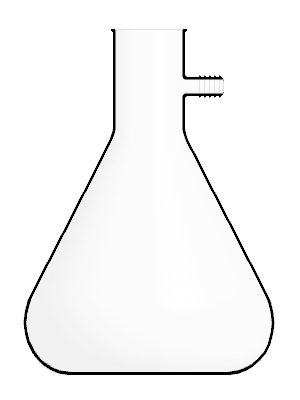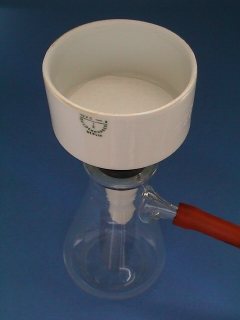Chemistry: Difference between revisions
Jump to navigation
Jump to search
(Undo revision 14118 by 124.43.115.29 (Talk)) |
m (Undo revision 45947 by IgAZwmawpK (talk)) |
||
| (2 intermediate revisions by 2 users not shown) | |||
| Line 1: | Line 1: | ||
{{Template:OutOfDate}} | |||
This will be where stuff about chemistry goes. Feel free to edit as you like; I'm starting with lists of reagents and glassware that I will be bringing, and will add photos as time goes on. | This will be where stuff about chemistry goes. Feel free to edit as you like; I'm starting with lists of reagents and glassware that I will be bringing, and will add photos as time goes on. | ||
Latest revision as of 17:23, 31 December 2014
| This article seems to be really old or very much out of date, and may contain wrong info.
Wiki-tip: You can check its history to see when it was last edited. |
This will be where stuff about chemistry goes. Feel free to edit as you like; I'm starting with lists of reagents and glassware that I will be bringing, and will add photos as time goes on.
All images are from Wikipedia and used under the GFDL.
Glassware[edit]
All items are 24/40 standard taper unless otherwise specified. Some items are not glassware, but are used in reaction setups.
Prices are from Sigma-Aldrich's catalogue. In reality these can be had much more cheaply on ebay.
- Liebig condenser, 200mm ($55.10)
- Allihn condenser, 200mm ($172.40)
- 3-neck 500mL round-bottom flask ($94.20)
- 500mL round-bottom flask ($30.70)
- 250mL round-bottom flask ($27.00)
- 100mL round-bottom flask ($23.50)
- 50mL round-bottom flask ($22.90)
- 2x50mL round-bottom flask with distiller arm (not standard taper)
- Addition funnel, 125mL ($113.40)
- Separating funnel, 100mL (not standard taper; use a 1-hole stopper for an adapter) (~$20 from American Science and Surplus)
- Separating funnel, 125mL
- Stillhead adapter ($68.10)
- Vacuum adapter ($47.10)
- Claisen adapter ($56.70)
- 0-360 degree thermometer
- 500mL beaker
- 250mL beaker
- 2x200mL beakers
- 40mL beaker
- 500mL one-arm Erlenmeyer flask (not standard taper)
- 2L one-arm Erlenmeyer flask (not standard taper)
- Buchner funnel
- 100mL graduated cylinder
- 10mL graduated cylinder
- 10mL burette
- Evaporating dish
- Aquarium pump with hoses (attaches to condenser for cooling it down) (~$25 at any aquarium store)
- Test tubes, various sizes, lots of them
- 2 ring stands with clamps
- Hose clamps
- Mortar and pestle
- Fritted funnel
- Repipet
- Millipore 1225 sampling manifold
- 2L reagent bottle with hose barb and hose
- Watch glasses
Reagents[edit]
- 1 gallon methanol
- 1 gallon phosphoric acid
- 1 gallon hydrochloric acid, 12M
- ~1lb potassium hydroxide
- Calcium chloride, anhydrous (drying agent)
- Magnesium sulfate, anhydrous (drying agent)
Things that are broken but could be fixed[edit]
- A 500mL round-bottom longneck distillation flask with the distiller arm broken off. If someone has an acetylene torch, this could be repaired by fusing a glass tube onto it, or the hole could be sealed up and the flask used for a reflux reaction flask.
- A Liebig condenser, not standard taper, with part of the stillhead end in several pieces. Again, fixable with a hot enough torch.
- A vacuum aspirator with a bunch of pipe-fitting adapters. It works, but currently the adapters are on there really tight and I can't get them off. If someone has a plumber's wrench and a bench vise, this is easy to fix.
Workshops we could do[edit]
- Distillation and drying. 99% ethanol is really expensive, but we can make it cheaply with everclear (or cheap vodka) and a little bit of work.
- Liquid-liquid extraction and organic separation -- polar vs. non-polar solvents, how to use them
- Column chromatography
- Steam extraction from organic materials -- make your own essential oils and hydrosols
- Acid/base extraction
- Build a rotary evaporator
- How to set up a reaction under reflux conditions
- Fractional distillation
- Build a fume hood
Things we should have on hand[edit]
There are many reagents which we should have in stock and which can be acquired easily from hardware stores or photography supply stores. Here are some, please add more:
- Acetone (hardware store)
- Xylene (hardware store)
- Toluene (hardware store, though do they sell it in California?)
- 99% isopropyl alcohol (pharmacy)
- Glacial acetic acid (photography supply)
- Dichloromethane (hardware store)
- Denatured alcohol (hardware store)
- Naphtha (hardware store)
- 99% ethanol (can be purchased at places like The Science Shop in San Jose, but is very expensive; cheaper to make our own)
- Silica gel (finer ground than the stuff that comes in packets, but we can grind it up in a mortar)
- Calcium chloride (hardware store, "Damp-Rid")
- Magnesium sulfate, anhydrous (pharmacy; buy Epsom salts and bake them in an oven to dehydrate, then put in a bag and crush into little chunks)
- Astroglide, glycerin/paraben-free (for greasing glass joints)
- Nitric acid, 70% (electronics supply -- used for etching PCBs)







